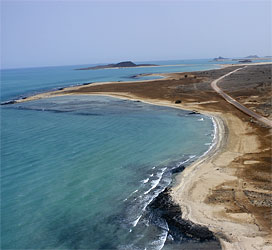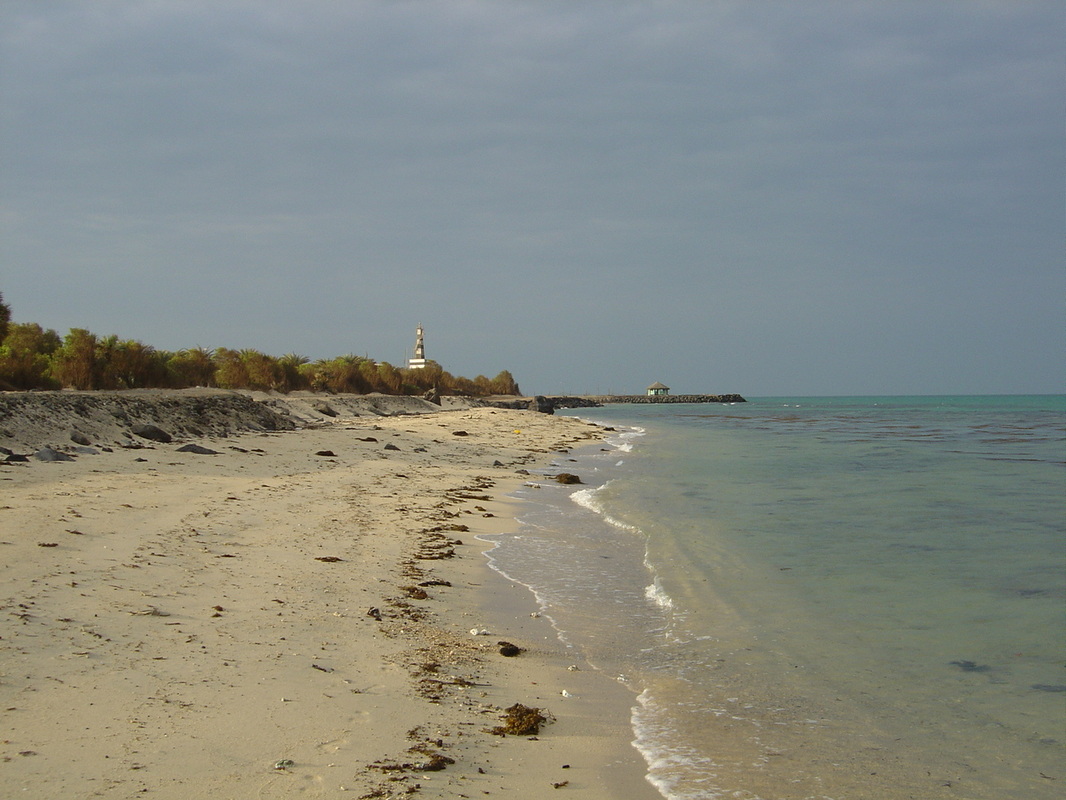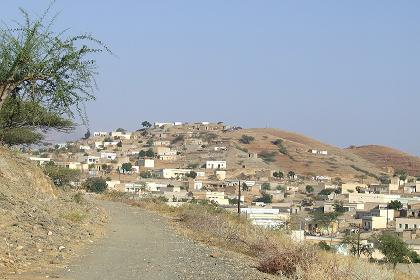PeopleThe estimated population of Eritrea in 2009 is just over five million. Eritrean society is ethnically heterogeneous consisting of nine ethnic backgrounds. The Tigrinya people and the Tigre people together make up about 80% of the population. These form the bulk of the country's predominantly Semitic-speaking population (encompassing Arabic, Hebrew, Amharic, and Aramaic languages). The rest of the population is from other Afro-Asiatic groups including the Saho, Hedareb, Afar, and Bilen.
These Cushitic-speaking peoples are believed to be the oldest inhabitants of the Horn of Africa. There are also a number of Nilotic peoples who are represented in Eritrea by the Kunama and Nara. There are also minorities of Italian Eritreans and Ethiopian Tigrayans. |
Eritrea is a mountainous country located in North East Africa, bordered by the Sudan on the north and west, the Red Sea on the north and east, and Ethiopia and Djibouti on the south. Eritrea is a little known African gem with an interesting mixture of culture, art, entertainment, and interesting local flora and fauna. The historical town of Asmara is reputed to be one of the cleanest cities in Africa; it is replete with spectacular architecture and is elegantly lined with palms, boutiques, coffee shops, and restaurants reminiscent of southern Italy. Eritrea also boasts more than 200 islands that belong to the Dahlak archipelago with a great opportunity for yacht cruising, scuba diving, and pearl diving. The isolated and uninhabited Dahlak Islands, and the rich feeding grounds which surround them, attract large numbers of nesting sea birds from all over the Red Sea. |
Geography
Eritrea is the land where you can experience three seasons in just two hours - from the rugged mountain peaks of Emba Soira to the arid desert heat of the Danakil Depression (100 meters below sea level and one of the hottest places on earth) to the cool breezes of the Red Sea.
Year-round the highlands are temperate, and Asmara has a pleasant climate all year long. The eastern coastal areas receive unpredictable, "little rains" during October to March, while the other areas get "main rains" from June to September. In the highlands further inland, the hottest month is usually May and in winter temperatures are near freezing point at night.
Year-round the highlands are temperate, and Asmara has a pleasant climate all year long. The eastern coastal areas receive unpredictable, "little rains" during October to March, while the other areas get "main rains" from June to September. In the highlands further inland, the hottest month is usually May and in winter temperatures are near freezing point at night.
HistoryEritrea has a rich history of merges and takeovers and fighting for independence from one country or the other. In its early beginnings, Eritrea was tied to Ethiopia when they were part of the early kingdom of Aksum. Eritrea later became the northern province of Ethiopia. But in the 16th century this valuable stretch of Red Sea coast fell to the strongest empire of the day, the Ottoman Turks.
With the opening of the Suez Canal and the accessibility of the Red Sea to Mediterranean traffic, the Italians took over with a controversial treaty. The Italian presence in Eritrea increased rapidly beginning in 1935, however, they were defeated in battle by the British. Later, Eritrea was once again made a part of Ethiopia, but after an ongoing war with Ethiopia, a famine, and severe border disputes, Eritrea gained its independence and is now self-governed. |
Famous Attraction
There are unlimited opportunities for the intrepid explorer in Eritrea. The capital, Asmara, has the most outstanding collection of colonial architectural wonders in all of Africa. On the Red Sea Coast, the sultry town of Massawa is a cultural melting pot with beautiful architecture and beaches. North of Massawa is the white sandy beach of Gurgusum. The beaches are clean and uncrowded, so it is a great place to sunbathe, and for swimming, sailing, scuba diving, or snorkeling. This is also the starting point for visits to the Dahlak Islands, one of the least spoiled and least known reefs in the Red Sea. Sheikh Said Island is the first of Massawa's islands and is ideal for a day trip or picnic.
If you are more interested in the cultural landscape, then Barentu is an interesting marketing town to visit, with its colorful mix of tribal cultures.
If you are more interested in the cultural landscape, then Barentu is an interesting marketing town to visit, with its colorful mix of tribal cultures.
NightlifeThe people of Eritrea are fun loving, and the cinemas are a very popular medium of entertainment in Eritrea. Eritrean movies are based on the themes of comedy, romance, or films designed to engender patriotic feelings. The live theater is also a good place to go for an entertaining evening.
There are some outstanding restaurants and bars in Eritrea. Restaurants serve quality food and the bars are great places to just hang around with friends. Shopping is another very exciting and enjoyable activity in the evenings, and there are many unique products to choose from. |
Culture
The population of Eritrea is equally divided between Christian (Orthodox Church, Roman Catholic and Lutheran protestants) and Muslim religions. The population of the high plateau (Asmara) is predominantly Christian, while the lowlands and the coast are predominantly Muslim.
There are nine languages in Eritrea. Tigrinya (50%) and Arabic are the working languages. The other languages are Tigre, Afar, Saho, Bega, Bilen, Nara and Kunama.
There is no official language, though Tigrinya, Arabic and English predominate in commerce and national business. Eritreans show exceptional politeness, hospitality and friendliness. If you know a few words of Tigrinya, you'll amaze and delight the Eritreans and quickly win new friends.
CuisineEritrea serves up some mouthwatering delicacies in its many restaurants and eateries. Eritrean food habits vary from region to region, so there is always a new delicacy to explore. Wherever you go, whether to the cities or the countryside, Eritrea offers a smorgasbord of gastronomical delights with their traditional dishes. The two staples are kitcha, a very thin, baked unleavened wheat bread or pancake, and injera, a spongy pancake made from taff, wheat, or sorghum.
Injera is eaten with stew, usually called zigni, made from whatever is available (meat or fish, vegetables or a combination of the two). It is simmered for hours, in a tomato sauce spiced with berbere, chili powder and other spices. Tsebhi is a meat saute prepared with lamb or beef, fresh tomatoes and hot peppers. There is an Italian influence in Eritrea and Italian dishes are very popular. Most restaurants serve lasagna, spaghetti, and other pasta dishes, and there are several pizza restaurants in Asmara. |
Qunar







